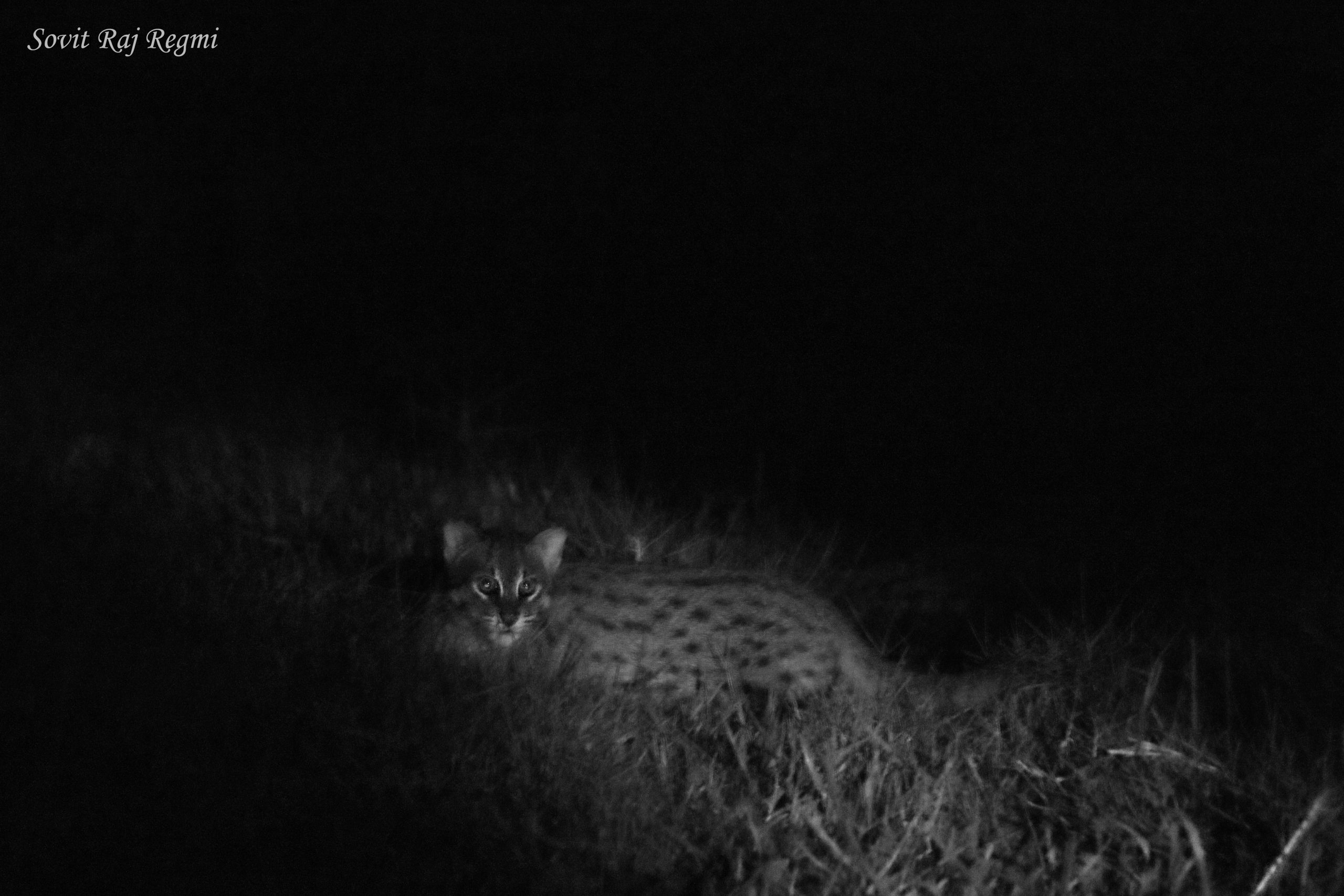Elusive lesser-known cat – The Fishing Cat
- Nature Khabar

Sovit Raj Regmi,
“They are generally recorded using a camera trap, a device that captures photos or video with the help of sensors. Direct sighting is quite rare but I was lucky enough to observe and capture this mysterious small cat at Chilika Lagoon, India”.
Morphology and Behavior
The Fishing cat (Prionailurus viverrinus) also known as Malaha Biralo in Nepali is a midsized wild cat species. These cats have a short leg, a big broad head, and a short tail, less than half the body lengthis twice the size of a typical house cat. Six to eight dark lines are running from the forehead to the neck. They are prowess swimmers. With webbing present in between their toes, claw tips protrude from their sheaths even when retracted. Further, they also have two layers of fur: the inner and the outer. The dense fur layer close to the cat's skin comprises tightly woven hair strands, creating a barrier that prevents water from reaching the skin, thereby ensuring warmth in cold water. Males (weighting 8-17 kg) are larger than females (weighting 5-9 kg) They are nocturnal species They are mostly solitary. Life span of this species accounts for 12 years and the main reproduction season is January- February. After a gestation of 63 days, females produce a litter of 1-4 (average 2) kittens.
Diet
Fishing cat's diet consists of fish are their primary prey, although they also consume mollusks, arthropods, amphibians, reptiles, birds, and small mammals like rodents.
Distribution
It is native to south and southeast Asia including Sri Lanka, India, Bangladesh, Pakistan, Thailand, Cambodia, Myanmar, Vietnam, and Nepal. It is a habitat specialist, strongly associated with wetlands such as swamps, marshes, rivers, and mangroves. In Nepal, the fishing cat population in Nepal was estimated between 150 and 200 through expert opinion. The distribution of the fishing cat in Nepal is limited to a small area in the southern Terai belt that borders India. According to Rama Mishra, founder of the Terai Fishing Cat Project, Nepal, and her team, 4.4% (6679 km2) of Nepal is a potential habitat for the fishing cat. They have been recorded in five protected areas of the terai i.e. Shuklaphanta National Park, Bardia National Park, Chitwan National Park, Parsa National Park, and KoshiTappu Wildlife Reserve. Outside protected habitats, there were also recorded from Bankalwa (Sunsari), Bodhban (Bara), and Jagdishpur Reservoir (Kapilvastu).
Conservation Status
They are categorized as Vulnerable (VU) according to the IUCN Red List and nationally Endangered (EN) in Nepal. It is also included in CITIES Appendix I.
Threats
Wetland destruction is a threat to this species, as over 50% of Asian wetlands are under threat and disappearing. Their range is decreasing globally with the shrinking and degradation of wetlands due to several factors such as the conversion into other land uses, land degradation (increasing erosion and sedimentation), industrialization, urbanization, and global climate change. Fishing cats are also threatened by hunting and road kills. Moreover, there are increasing human-fishing cat conflicts and retaliatory killings.
B.Sc. Zoology (passed out)
Tri-Chandra Multiple Campus





Feedback